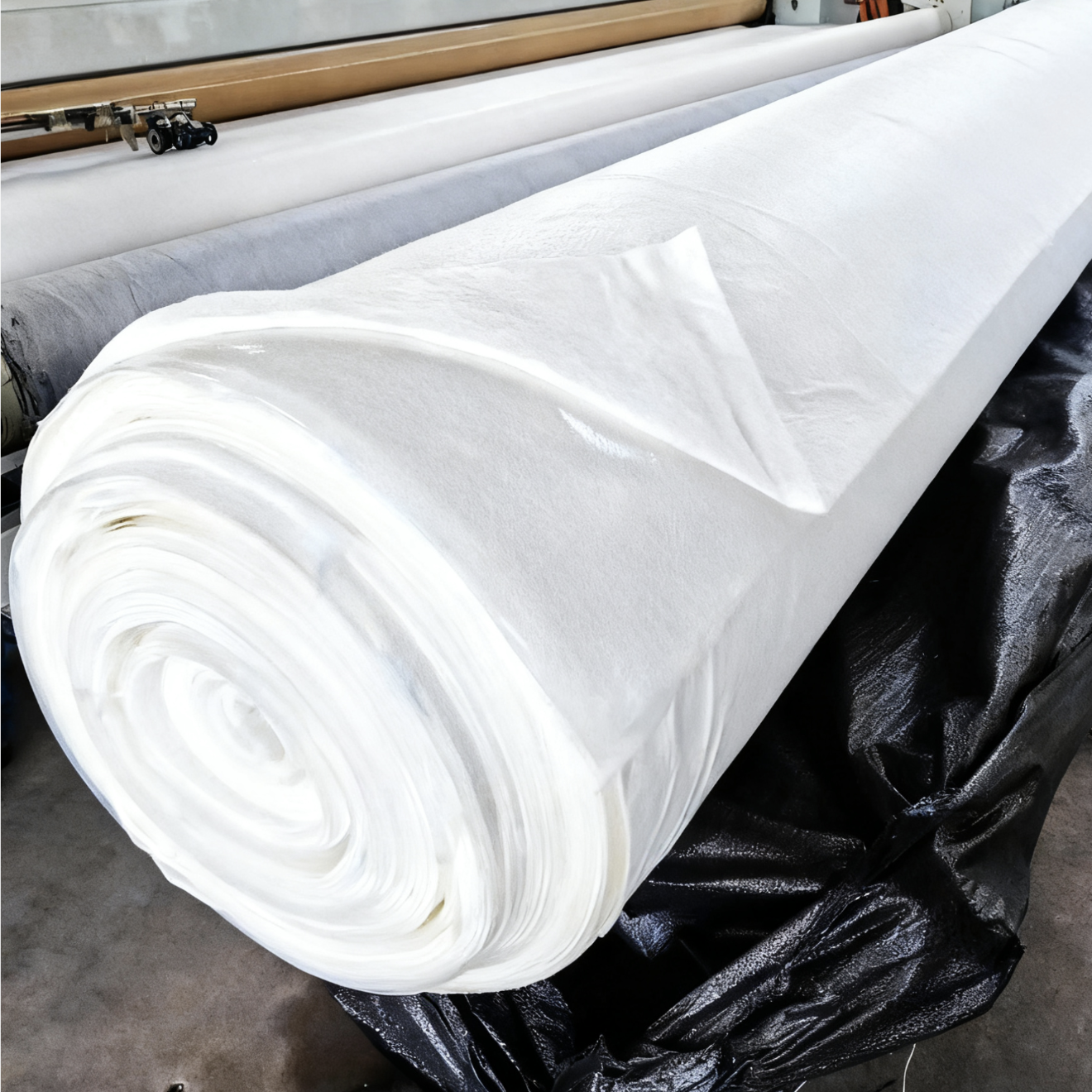
-
 Español
Español
-
 Portugues
Portugues
-
 Pусский
Pусский
-
 Français
Français
-
 Deutsch
Deutsch
-
 日本語
日本語
-
 한국어
한국어
-
 العربية
العربية
-
 Italiano
Italiano
-
 Nederlands
Nederlands
-
 Ελληνικά
Ελληνικά
-
 Svenska
Svenska
-
 Polski
Polski
-
 ไทย
ไทย
-
 Türk dili
Türk dili
-
 हिन्दी
हिन्दी
-
 Indonesia
Indonesia
-
 Melayu
Melayu
-
 Tiếng Việt
Tiếng Việt
-
 中文
中文
-
 dansk
dansk
-
 Magyar
Magyar
-
 қазақ
қазақ
-
 বাংলা
বাংলা
-
 עִברִית
עִברִית
-
 čeština
čeština
-
 Soomaali
Soomaali
-
 မြန်မာ
မြန်မာ
-
 فارسی
فارسی
-
 українська
українська
-
 norsk
norsk
-
 Gaeilge
Gaeilge
-
 беларускі
беларускі
-
 Română
Română
-
 ພາສາລາວ
ພາສາລາວ
-
 Filipino
Filipino
-
 lietuvių
lietuvių
-
 Cymraeg
Cymraeg
-
 македонски
македонски
-
 Suomalainen
Suomalainen
-
 slovenský
slovenský
-
 o'zbek
o'zbek
-
 اردو
اردو
-
 հայերեն
հայերեն
-
 Igbo
Igbo
-
 български
български
-
 سنڌي
سنڌي
-
 Shona
Shona
-
 සිංහල
සිංහල
-
 Hrvatski
Hrvatski
-
 íslenskur
íslenskur
-
 galego
galego
-
 català
català
-
 Zulu South Africa
Zulu South Africa
-
 Afrikaans isiXhosa
Afrikaans isiXhosa
-
 ಕನ್ನಡ
ಕನ್ನಡ
-
 lëtzebuergesch
lëtzebuergesch
-
 Indonésia Sunda
Indonésia Sunda
-
 basa jawa
basa jawa
-
 ગુજરાતી
ગુજરાતી
-
 Кыргызча
Кыргызча
-
 тоҷикӣ
тоҷикӣ
-
 Србија
Србија
-
 Twi
Twi
-
 Hawaii
Hawaii
-
 Cebu
Cebu
-
 नेपाल
नेपाल
-
 euskara
euskara
-
 Kurdî
Kurdî
-
 frissi
frissi
-
 יידיש
יידיש
-
 latvija
latvija
-
 slovenija
slovenija
-
 kiswahili
kiswahili
-
 ਪੰਜਾਬ
ਪੰਜਾਬ
-
 پښتو
پښتو
-
 საქართველოს
საქართველოს
-
 hua moni
hua moni
-
 bosna
bosna
-
 తెలుగు
తెలుగు
-
 தமிழ்
தமிழ்
-
 Kreyòl ayisyen
Kreyòl ayisyen
-
 Eesti
Eesti
-
 Corsica
Corsica
-
 Yoruba
Yoruba
-
 Gàidhlig na h-Alba
Gàidhlig na h-Alba
-
 Samoa
Samoa
-
 Монгол
Монгол
-
 Hausa
Hausa
-
 Azərbaycan
Azərbaycan
-
 አማራ
አማራ
-
 Shqipëria
Shqipëria
-
 Malagasy
Malagasy
-
 मराठी
मराठी
-
 മലയാളം
മലയാളം
-
 Malta
Malta
-
 ខ្មែរ
ខ្មែរ
-
 Chicheva
Chicheva
-
 中文(繁体)
中文(繁体)
-
 ଓଡିଆ
ଓଡିଆ
-
 Setswana
Setswana
-
 Afrikaans
Afrikaans
-
 Aymara
Aymara
-
 Башҡорт
Башҡорт
-
 Türkmenler
Türkmenler
-
 ትግሪኛ
ትግሪኛ
-
 Afaan Oromoo
Afaan Oromoo
-
 অসমীয়া
অসমীয়া
-
 Kinyarwanda
Kinyarwanda
-
 Ilocano
Ilocano
-
 Wolof
Wolof
-
 अवधी
अवधी
-
 Oluganda
Oluganda
-
 Bikol
Bikol
-
 Fulɓe
Fulɓe
-
 Kikongo
Kikongo
-
 Sango
Sango
-
 ދިވެހި
ދިވެހި
-
 Lingala
Lingala
-
 मैथिली
मैथिली
-
 Tsonga
Tsonga
-
 ꯃꯦꯏ ꯊꯥꯏ꯫
ꯃꯦꯏ ꯊꯥꯏ꯫
-
 brezhoneg
brezhoneg
-
 Furlan
Furlan
-
 नेवा
नेवा
-
 རྫོང་ཁ
རྫོང་ཁ
-
 Santali
Santali
-
 Аҧсуа
Аҧсуа
-
 Нохчийн
Нохчийн
-
 Чӑваш
Чӑваш
-
 Татар
Татар
-
 Batak Karo
Batak Karo
-
 دری
دری
-
 Diura
Diura
-
 Fengyu
Fengyu
-
 Eʋegbe
Eʋegbe
-
 Iban
Iban
-
 Fiji
Fiji
-
 Tonga
Tonga
-
 Inuktitut
Inuktitut
-
 Nahuatl
Nahuatl
-
 maaya yucatec
maaya yucatec
-
 Runasimi
Runasimi
-
 guarani
guarani
-
 Qafar
Qafar
-
 Acholi
Acholi
-
 Dinka
Dinka
-
 Luo
Luo
-
 Lundi
Lundi
-
 isiNdebele
isiNdebele
-
 Tshivenḓa
Tshivenḓa
-
 Sesotho sa Leboa
Sesotho sa Leboa
-
 Sesotho sa Borwa
Sesotho sa Borwa
-
 Ndumbe
Ndumbe
-
 Papuan Pidgin
Papuan Pidgin
-
 Rromani ćhib
Rromani ćhib
-
 Thok Nath
Thok Nath
yuxiatugong@163.com
+86 18353494641
-
 Español
Español
-
 Portugues
Portugues
-
 Pусский
Pусский
-
 Français
Français
-
 Deutsch
Deutsch
-
 日本語
日本語
-
 한국어
한국어
-
 العربية
العربية
-
 Italiano
Italiano
-
 Nederlands
Nederlands
-
 Ελληνικά
Ελληνικά
-
 Svenska
Svenska
-
 Polski
Polski
-
 ไทย
ไทย
-
 Türk dili
Türk dili
-
 हिन्दी
हिन्दी
-
 Indonesia
Indonesia
-
 Melayu
Melayu
-
 Tiếng Việt
Tiếng Việt
-
 中文
中文
-
 dansk
dansk
-
 Magyar
Magyar
-
 қазақ
қазақ
-
 বাংলা
বাংলা
-
 עִברִית
עִברִית
-
 čeština
čeština
-
 Soomaali
Soomaali
-
 မြန်မာ
မြန်မာ
-
 فارسی
فارسی
-
 українська
українська
-
 norsk
norsk
-
 Gaeilge
Gaeilge
-
 беларускі
беларускі
-
 Română
Română
-
 ພາສາລາວ
ພາສາລາວ
-
 Filipino
Filipino
-
 lietuvių
lietuvių
-
 Cymraeg
Cymraeg
-
 македонски
македонски
-
 Suomalainen
Suomalainen
-
 slovenský
slovenský
-
 o'zbek
o'zbek
-
 اردو
اردو
-
 հայերեն
հայերեն
-
 Igbo
Igbo
-
 български
български
-
 سنڌي
سنڌي
-
 Shona
Shona
-
 සිංහල
සිංහල
-
 Hrvatski
Hrvatski
-
 íslenskur
íslenskur
-
 galego
galego
-
 català
català
-
 Zulu South Africa
Zulu South Africa
-
 Afrikaans isiXhosa
Afrikaans isiXhosa
-
 ಕನ್ನಡ
ಕನ್ನಡ
-
 lëtzebuergesch
lëtzebuergesch
-
 Indonésia Sunda
Indonésia Sunda
-
 basa jawa
basa jawa
-
 ગુજરાતી
ગુજરાતી
-
 Кыргызча
Кыргызча
-
 тоҷикӣ
тоҷикӣ
-
 Србија
Србија
-
 Twi
Twi
-
 Hawaii
Hawaii
-
 Cebu
Cebu
-
 नेपाल
नेपाल
-
 euskara
euskara
-
 Kurdî
Kurdî
-
 frissi
frissi
-
 יידיש
יידיש
-
 latvija
latvija
-
 slovenija
slovenija
-
 kiswahili
kiswahili
-
 ਪੰਜਾਬ
ਪੰਜਾਬ
-
 پښتو
پښتو
-
 საქართველოს
საქართველოს
-
 hua moni
hua moni
-
 bosna
bosna
-
 తెలుగు
తెలుగు
-
 தமிழ்
தமிழ்
-
 Kreyòl ayisyen
Kreyòl ayisyen
-
 Eesti
Eesti
-
 Corsica
Corsica
-
 Yoruba
Yoruba
-
 Gàidhlig na h-Alba
Gàidhlig na h-Alba
-
 Samoa
Samoa
-
 Монгол
Монгол
-
 Hausa
Hausa
-
 Azərbaycan
Azərbaycan
-
 አማራ
አማራ
-
 Shqipëria
Shqipëria
-
 Malagasy
Malagasy
-
 मराठी
मराठी
-
 മലയാളം
മലയാളം
-
 Malta
Malta
-
 ខ្មែរ
ខ្មែរ
-
 Chicheva
Chicheva
-
 中文(繁体)
中文(繁体)
-
 ଓଡିଆ
ଓଡିଆ
-
 Setswana
Setswana
-
 Afrikaans
Afrikaans
-
 Aymara
Aymara
-
 Башҡорт
Башҡорт
-
 Türkmenler
Türkmenler
-
 ትግሪኛ
ትግሪኛ
-
 Afaan Oromoo
Afaan Oromoo
-
 অসমীয়া
অসমীয়া
-
 Kinyarwanda
Kinyarwanda
-
 Ilocano
Ilocano
-
 Wolof
Wolof
-
 अवधी
अवधी
-
 Oluganda
Oluganda
-
 Bikol
Bikol
-
 Fulɓe
Fulɓe
-
 Kikongo
Kikongo
-
 Sango
Sango
-
 ދިވެހި
ދިވެހި
-
 Lingala
Lingala
-
 मैथिली
मैथिली
-
 Tsonga
Tsonga
-
 ꯃꯦꯏ ꯊꯥꯏ꯫
ꯃꯦꯏ ꯊꯥꯏ꯫
-
 brezhoneg
brezhoneg
-
 Furlan
Furlan
-
 नेवा
नेवा
-
 རྫོང་ཁ
རྫོང་ཁ
-
 Santali
Santali
-
 Аҧсуа
Аҧсуа
-
 Нохчийн
Нохчийн
-
 Чӑваш
Чӑваш
-
 Татар
Татар
-
 Batak Karo
Batak Karo
-
 دری
دری
-
 Diura
Diura
-
 Fengyu
Fengyu
-
 Eʋegbe
Eʋegbe
-
 Iban
Iban
-
 Fiji
Fiji
-
 Tonga
Tonga
-
 Inuktitut
Inuktitut
-
 Nahuatl
Nahuatl
-
 maaya yucatec
maaya yucatec
-
 Runasimi
Runasimi
-
 guarani
guarani
-
 Qafar
Qafar
-
 Acholi
Acholi
-
 Dinka
Dinka
-
 Luo
Luo
-
 Lundi
Lundi
-
 isiNdebele
isiNdebele
-
 Tshivenḓa
Tshivenḓa
-
 Sesotho sa Leboa
Sesotho sa Leboa
-
 Sesotho sa Borwa
Sesotho sa Borwa
-
 Ndumbe
Ndumbe
-
 Papuan Pidgin
Papuan Pidgin
-
 Rromani ćhib
Rromani ćhib
-
 Thok Nath
Thok Nath

News Center
News Center
HOT PRODUCT
HDPE Waterproof Sheet Liner Chemical and UV Resistant
2025-10-13 07:32:56

HDPE Waterproof Sheet Liner: Chemical and UV Resistant Properties
Introduction
High-Density Polyethylene (HDPE) waterproof sheet liners are widely used in various industries due to their excellent chemical resistance, UV stability, and durability. These liners are essential for applications such as landfill containment, water storage, mining, agriculture, and industrial waste management. HDPE liners provide a reliable barrier against moisture, chemicals, and environmental degradation, making them a preferred choice for long-term waterproofing solutions.
This article explores the key properties of HDPE waterproof sheet liners, focusing on their chemical and UV resistance, manufacturing process, applications, and installation best practices.
---
1. What is HDPE?
HDPE (High-Density Polyethylene) is a thermoplastic polymer known for its high strength-to-density ratio. It is produced through the polymerization of ethylene under controlled conditions, resulting in a material with excellent mechanical properties, chemical resistance, and flexibility.
Key Characteristics of HDPE:
- High tensile strength – Resists punctures and tears.
- Flexibility – Can conform to uneven surfaces.
- Chemical resistance – Impervious to most acids, alkalis, and solvents.
- UV resistance – Contains stabilizers to prevent degradation from sunlight.
- Low permeability – Effectively prevents water and gas penetration.
- Long lifespan – Typically lasts 20-50 years depending on environmental conditions.
---
2. Chemical Resistance of HDPE Waterproof Sheet Liners
One of the most significant advantages of HDPE liners is their resistance to a wide range of chemicals. This makes them ideal for applications where exposure to corrosive substances is a concern.
Resistance to Common Chemicals:
- Acids (e.g., sulfuric acid, hydrochloric acid) – HDPE remains stable even in highly acidic environments.
- Alkalis (e.g., sodium hydroxide, potassium hydroxide) – Does not degrade when exposed to strong bases.
- Salts and brines – Resistant to saltwater corrosion, making it suitable for marine applications.
- Hydrocarbons (e.g., oils, fuels) – Provides a barrier against petroleum-based products.
- Industrial solvents – Withstands exposure to alcohols, ketones, and other organic solvents.
Limitations:
While HDPE is highly resistant to most chemicals, it can be affected by:
- Strong oxidizing agents (e.g., concentrated nitric acid, hydrogen peroxide) – May cause gradual degradation.
- Chlorinated solvents (e.g., trichloroethylene) – Can lead to swelling or softening over time.
For applications involving extreme chemical exposure, additional testing is recommended to ensure compatibility.
---
3. UV Resistance of HDPE Waterproof Sheet Liners
Exposure to ultraviolet (UV) radiation can degrade many plastics, causing brittleness and loss of strength. However, HDPE liners are formulated with UV stabilizers to enhance their resistance to sunlight.
How UV Stabilization Works:
- Carbon black additive – Many HDPE liners contain carbon black, which absorbs UV radiation and prevents polymer breakdown.
- Hindered amine light stabilizers (HALS) – These additives slow down the degradation process by neutralizing free radicals formed due to UV exposure.
Benefits of UV-Resistant HDPE Liners:
- Extended lifespan – Can withstand years of direct sunlight without significant deterioration.
- Maintained flexibility – Does not become brittle or crack under prolonged UV exposure.
- Suitable for exposed applications – Ideal for ponds, reservoirs, and landfill caps where the liner is not covered.
Testing and Standards:
UV resistance is measured through accelerated weathering tests (e.g., ASTM G154, ISO 4892). High-quality HDPE liners typically meet or exceed industry standards for UV stability.
---
4. Manufacturing Process of HDPE Waterproof Sheet Liners
HDPE liners are manufactured using advanced extrusion techniques to ensure uniformity and durability.
Key Steps in Production:
1. Raw Material Selection – Virgin HDPE resin is preferred for high-performance liners.
2. Extrusion – The polymer is melted and formed into sheets using flat die or blown film extrusion.
3. Calendering – The sheets are passed through rollers to achieve the desired thickness.
4. Quality Control – Thickness, tensile strength, and chemical resistance are tested.
5. Rolling and Packaging – The liner is rolled and protected for transportation.
Thickness Options:
HDPE liners are available in thicknesses ranging from 0.5 mm to 3.0 mm, with thicker liners providing greater puncture resistance.
---
5. Applications of HDPE Waterproof Sheet Liners
Due to their durability and resistance properties, HDPE liners are used in various industries:
1. Landfill and Waste Containment
- Primary and secondary liners – Prevent leachate from contaminating groundwater.
- Landfill caps – Minimize rainwater infiltration and gas emissions.
2. Water Storage and Management
- Ponds and reservoirs – Used in agriculture, aquaculture, and fire suppression systems.
- Canals and irrigation channels – Reduce water seepage.
3. Mining and Industrial Applications
- Heap leach pads – Contain chemical solutions used in metal extraction.
- Tailings ponds – Store mining byproducts safely.
4. Agricultural Uses
- Manure lagoons – Prevent nutrient runoff into water sources.
- Silage covers – Protect feed from moisture and spoilage.
5. Construction and Infrastructure
- Tunnel waterproofing – Prevents water ingress in underground structures.
- Roofing membranes – Provides an additional moisture barrier.
---
6. Installation Best Practices
Proper installation is crucial to maximizing the performance of HDPE liners.
Key Steps:
1. Surface Preparation – Remove sharp objects, compact the soil, and ensure a smooth base.
2. Liner Deployment – Unroll the liner carefully to avoid wrinkles and folds.
3. Seaming – Use thermal fusion (welding) or adhesive tapes for strong, leak-proof seams.
4. Anchoring – Secure the edges with trench anchors or ballast materials.
5. Inspection – Conduct leak detection tests (e.g., spark testing, vacuum testing).
Common Mistakes to Avoid:
- Poor seam welding – Can lead to leaks.
- Inadequate subgrade preparation – May cause punctures.
- Excessive stretching – Weakens the liner.
---
7. Conclusion
HDPE waterproof sheet liners offer exceptional chemical and UV resistance, making them a reliable choice for demanding applications. Their durability, flexibility, and long lifespan ensure cost-effective protection against water and chemical leakage.
By selecting the right thickness, ensuring proper installation, and following maintenance guidelines, users can maximize the performance of HDPE liners in various environmental conditions. Whether for landfills, water storage, or industrial containment, HDPE liners provide a robust and sustainable solution for waterproofing needs.
For optimal results, always consult technical specifications and industry standards when selecting and installing HDPE liners.
---
This article provides a comprehensive overview of HDPE waterproof sheet liners, emphasizing their chemical and UV-resistant properties. If you need further details on specific applications or installation techniques, additional research or expert consultation is recommended.








 Phone
Phone
Comment
(0)